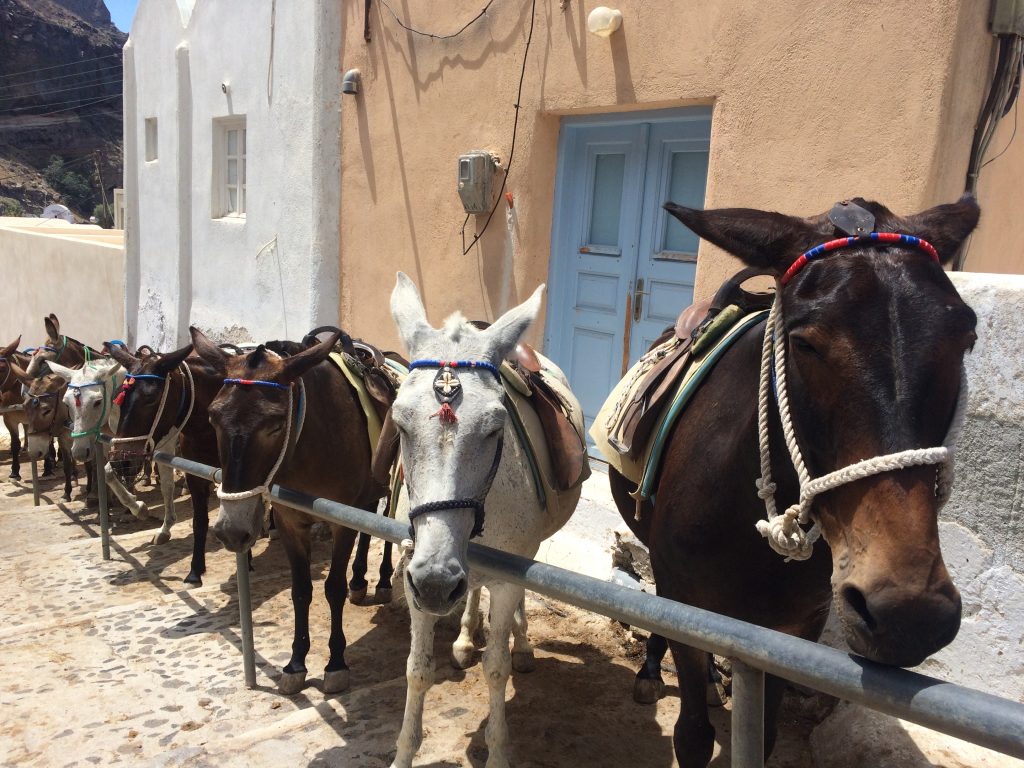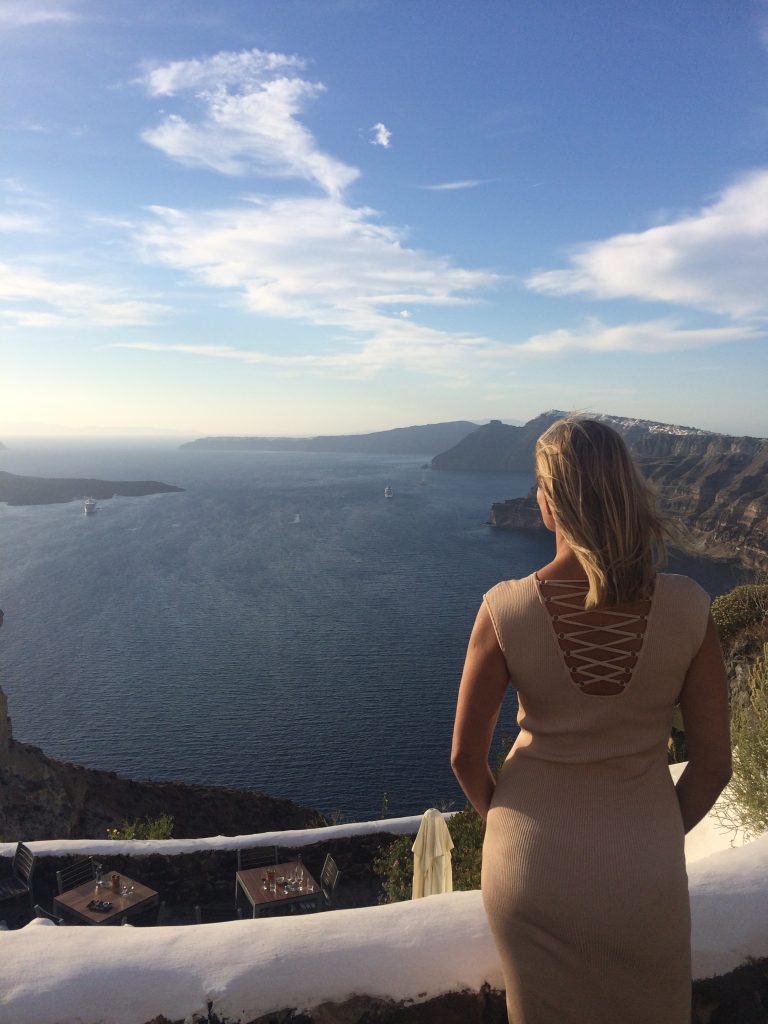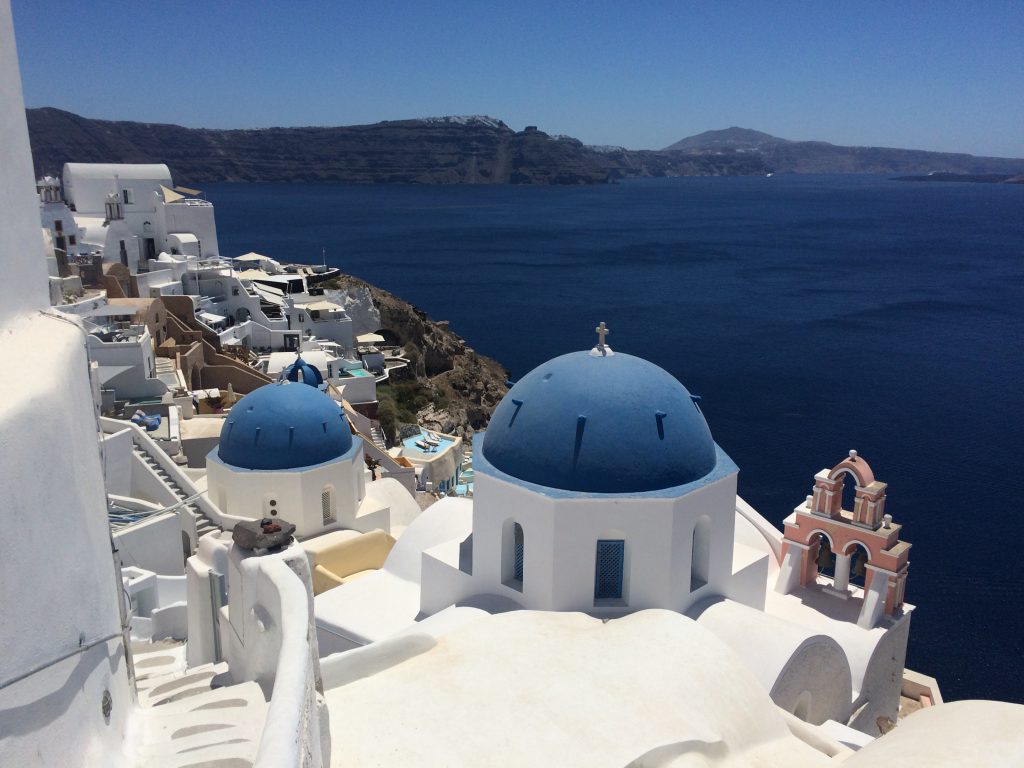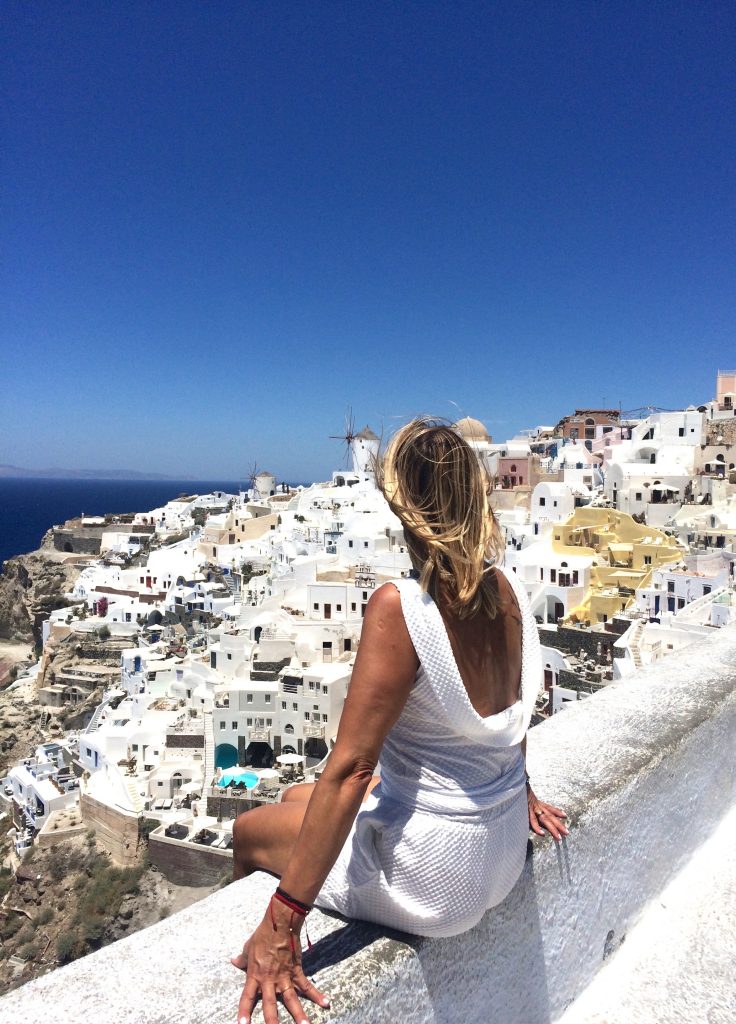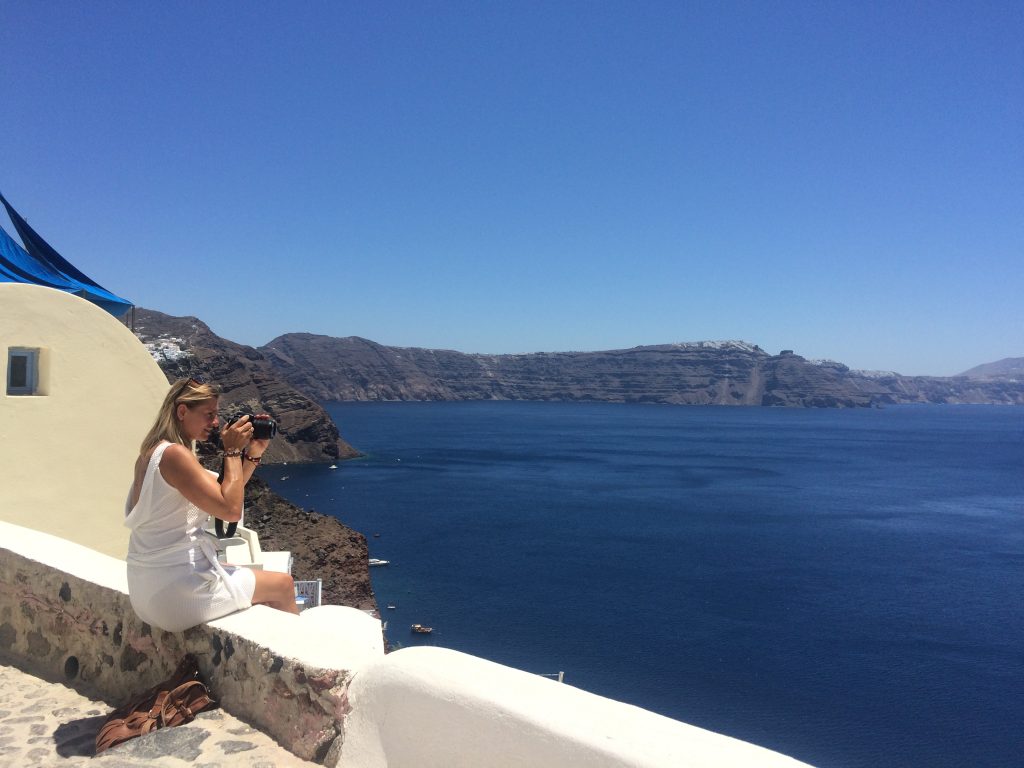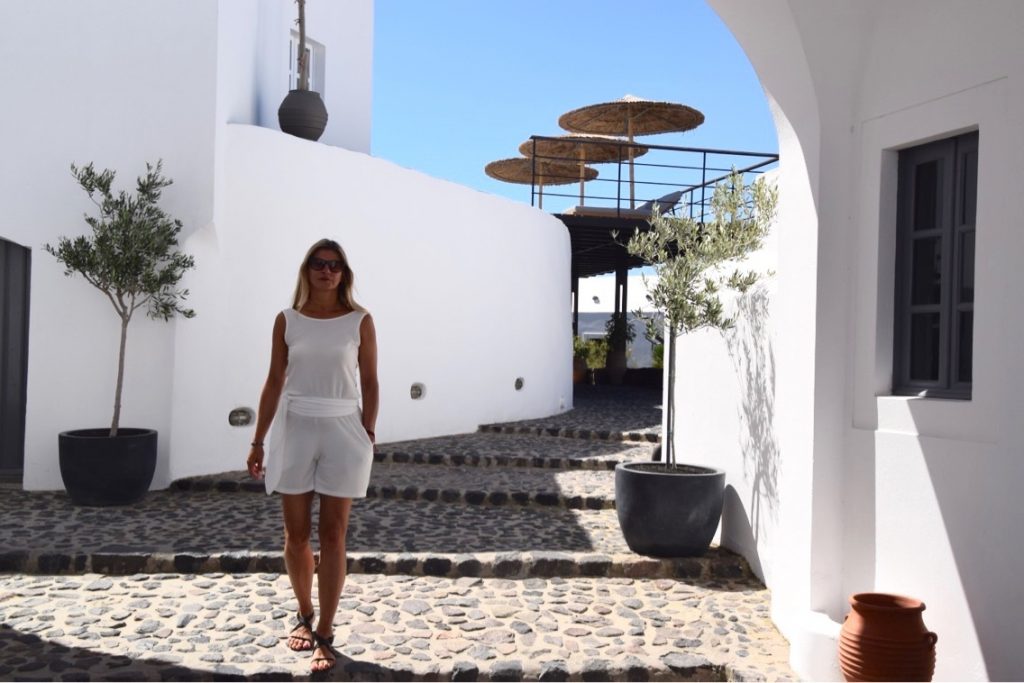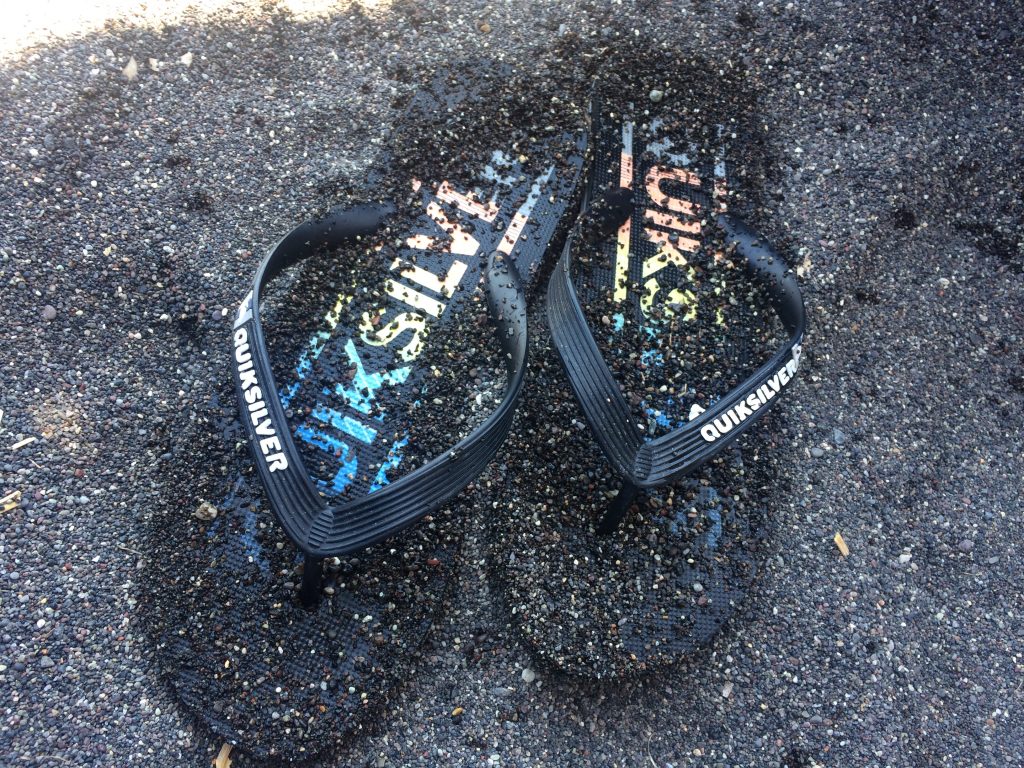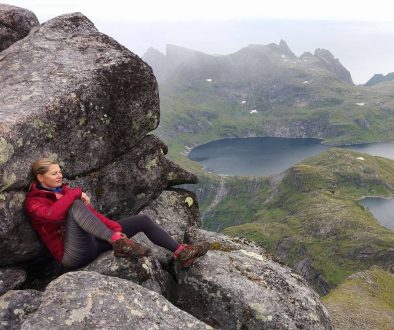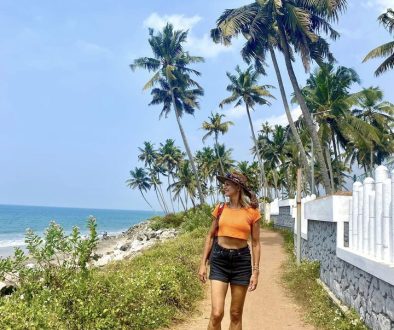Grecki skarb – Santorini
Byłam na wielu egzotycznych wyspach świata, ale greckie wyspy uważam za jedyne w swoim rodzaju. Uwielbiam ich śródziemnomorski charakter, skalne zatoczki z lazurową wodą, przyjazne tawerny z lokalną kuchnią, zapach rozmarynu w tradycyjnych wioskach. A do tego na każdej z wysp znajdziemy wykopaliska, antyczne ruiny, żywą historię… Grecja ma kilka tysięcy wysp, jest więc w czym wybierać. Tym razem odwiedziłam Santorini, w archipelagu Cykladów, uznawaną za jedną z najpiękniejszych wysp świata.
Santorini swoją popularność zawdzięcza głównie niezwykłemu położeniu. Strome, trzystumetrowe zbocza otaczają kalderę, zalaną morzem, w której znajdują się mniejsze wysepki. W miasteczku Oia białe ściany domów i niebieskie kopuły kapliczek, niczym orle gniazda zawieszone są na skalnym klifie i spoglądają na otaczające Morze Egejskie. Tutejsze hoteliki, skierowane na zachód, mają ceny kilkakrotnie wyższe od pozostałych (wszak płaci się za najpiękniejszy widok) Dla tych widoków pary z całego świata przyjeżdżają specjalnie na swoje sesje ślubne! A ja pierwszy raz w życiu stałam w kolejce, żeby zrobić zdjęcie!!!
Przypływające do portu Fira co dzień wycieczkowce i promy z sąsiednich wysp, korzystają z pomocy osiołków, żeby ulżyć swoim turystom… Inni wdrapują się sami, bo żmudny spacer na szczyt (588 schodów) niczym jest w porównaniu z unikatowym selfie, jakie można zrobić z góry.
Santorini można spokojnie przejść na piechotę, wyspa ma tylko 76 km 2 powierzchni (18 km dł. – 12 km szer.) ale skuter lub quad są wygodniejszym rozwiązaniem w górzystym terenie. Można także skorzystać z lokalnych autobusów.
Mówi się, że Santorini stanowi pozostałość po zatopionej mitycznej Atlantydzie. Bez względu na to jak było naprawdę, wyspa przez ostatnich kilka tysięcy lat była miejscem wielokrotnych wybuchów wulkanu oraz trzęsień ziemi. Nie jest to łatwe miejsce do życia, duża wilgotność i silne wiatry odstraszają zimą. Nie znajdziemy tutaj gajów oliwnych, za to wulkaniczne gleba, bogata w minerały sprzyja uprawie winorośli, dzięki której białe wino jest wyśmienite a ponad dwadzieścia winnic eksportuje je na cały świat. Po kilkugodzinnym spacerze, siadam na tarasie jednej z tawern i podziwiam płynące pode mną statki. Można też śmiało zrelaksować się na jednej z czarnych wulkanicznych plaż, a wieczorem udać się na degustację do winnicy.
Następnego dnia wcześnie rano wstaję, żeby powłóczyć się po tradycyjnej wiosce Megalochori. Mieszkańców jest zaledwie sto osób. Cicho, spokojnie, napotkani ludzie pozdrawiają mnie serdecznie ,,kalimera” . Tutaj jakby czas się zatrzymał, wszystko płynie wolnej. Koty snują się uliczkami, ludzie odświętnie ubrani idą do kościoła, potem w tawernie spotykają się na ouzo i tutejsze przekąski, zwane meze.
Po południu odwiedzam archeologiczną atrakcję wyspy – domy i ulice miasteczka Akrotiri, które podobnie jak Pompeje, zostało pogrzebane pod wulkanicznym popiołem w 1614 p.n.e. Historia wyspy jest bogata. Przez całe wieki Santorini znajdowała się na skrzyżowaniu morskim dla minojskich i egipskich handlarzy, piratów saraceńskich i weneckich panów. Po walce z żywiołami, odzyskała świetność i dziś radzi sobie z nowym żywiołem – dwoma milionami odwiedzających rocznie, bo nie ma wątpliwości, że grecki skarb wart jest odwiedzin.
***
I have been to many exotic islands of the world, but I think Greek islands are the ones of any kind. I love their Mediterranean character, rocky coves with azure water, friendly taverns with local cuisine and the smell of rosemary in traditional villages. And on each of the islands we can find excavations, antique ruins, a living story… Greece has several thousand islands, so there is plenty to choose from. This time I visited Santorini, in the Cycladic archipelago, it is considered one of the most beautiful islands in the world. The location of Santorini is really amazing. The steep, three-hundred-meter-high slopes surround the caldera, flooded by the sea in which there are tiny islands. In the small town of Oia white houses and the blue chapels, perched like eagles’ nests along the rim on a few hundred meters cliff and look at the surrounding Aegean Sea. The local hotels built in traditional caves, oriented west, have prices several times higher than in other parts of the island. (after all you pay for the stunning view of the sunset) Just for these views couples from the world especially come here for their wedding sessions! And for the first time in my life I stood in the queue to take a scenic photo!
Every day, cruisers and ferries coming from neighboring islands use donkeys to ease their tourists climbing up from the port… Others climb up themselves, because the tedious walk to the top (588 steps) is nothing compared to the unique selfie you can take from the top.
Santorini can be easily walked on foot, the island has only 76 km 2 of land (18 km long – 12 km wide) but a scooter or quad are more convenient solution in mountainous terrain. You can also use local buses.
It is said that Santorini is the remnant of a sunken mythical Atlantis. Truth is the island has been a place of repeated volcanic eruptions and earthquakes for the last several thousand years. It is not an easy place of living, high humidity and strong winds are not favorable in winter. We will not find here olive groves, but the volcanic soil, rich in minerals, favors the cultivation of vines. Thanks to which white wine is excellent and more than twenty vineyards are exporting them all over the world.
After a few hours walk, I sit on the terrace of one of the taverns and admire the view of ships sailing under me. You can sit lazily and watch this way for hours. You can also relax on one of the black volcanic beaches and then in the evening go for wine tasting.
The next day I wake up early in the morning to wander in the traditional village of Megalochori. There are only one hundred people living there. Quietly, calmly, people greet me warmly – kalimera. Here, as if time has stopped, everything flows free. Cats strolling in the alleys, people dressed up go to the church, then they gather in tavern for ouzo or Santorinin beer, accompanied by local snacks, called meze.
In the afternoon I pay a visit to an archeological attraction – the houses and streets ,,Pompeii –like Akrotiri, the ruins of the hilltop town of ancient Thera, buried under volcanic ashes in 1614 B.C.
Small Santorini boasts of rich history. Over the years the island provided a maritime crossroads for Minoan and Egyptian traders, Saracen pirates and Venetian lords. After struggling with several natural disasters, today copes with two millions visitors a year. No doubts the Greek treasure is worth a visit!
– Kasia
